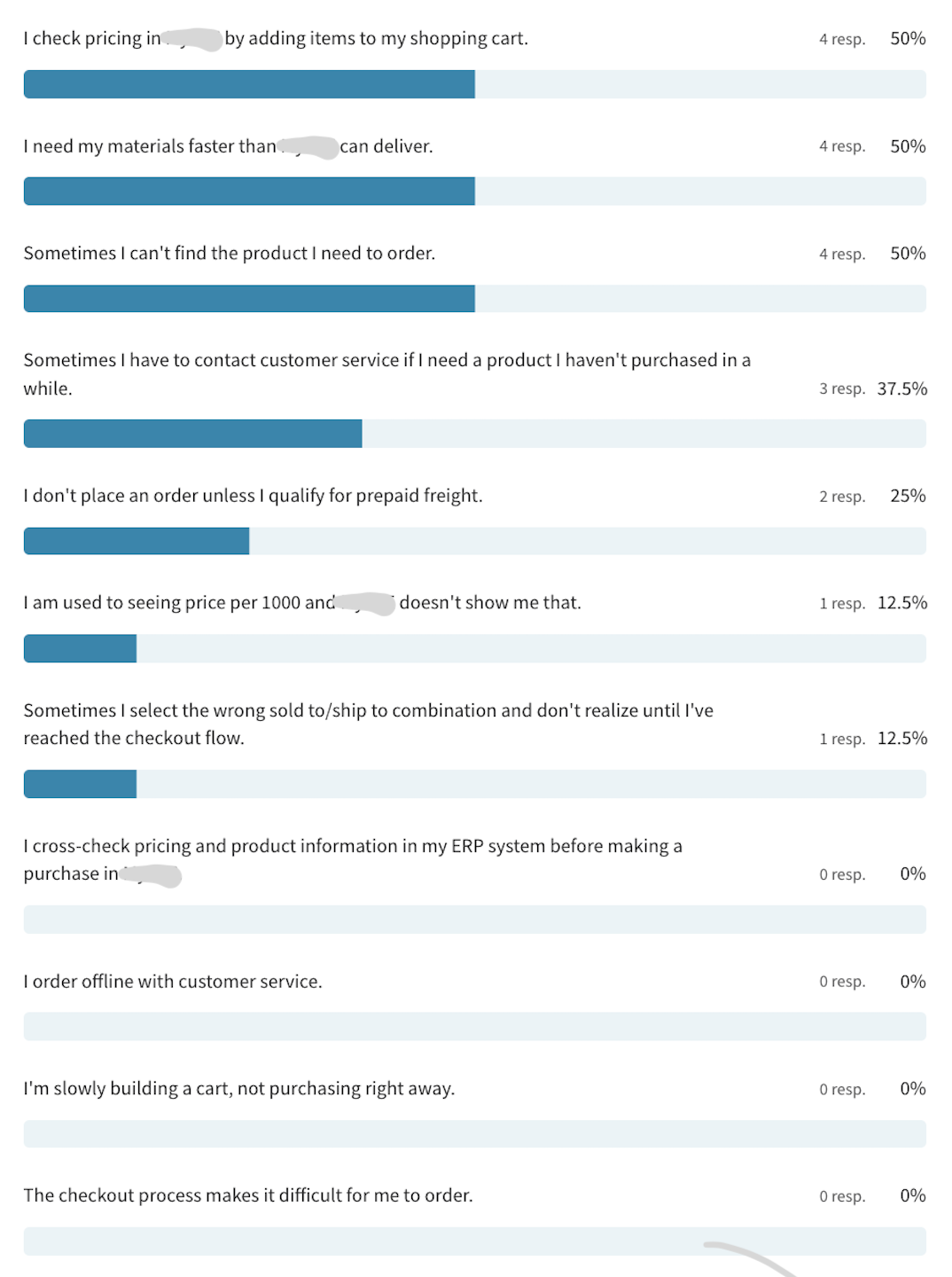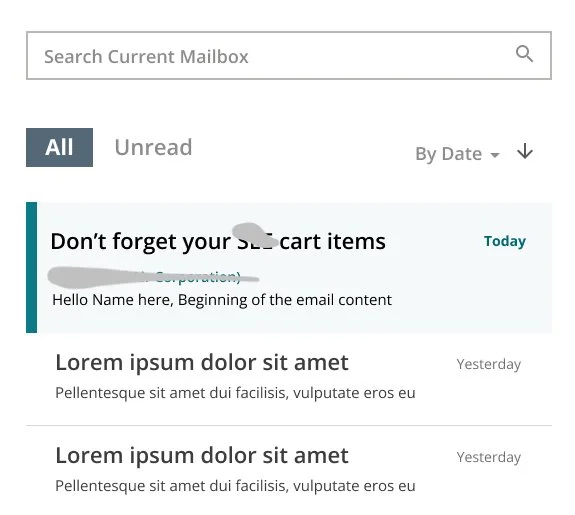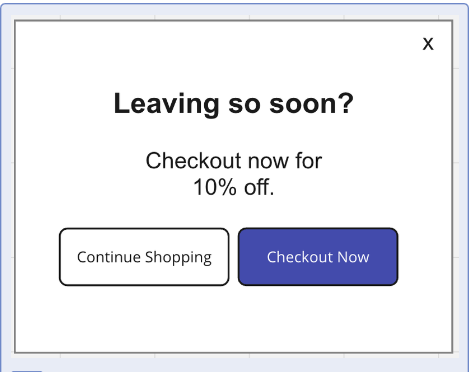Packaging Industry E-Commerce
Abandoned Cart | UX Research Study
Overview
The goal of this study was to better understand the reasons our customers are abandoning their carts in order to improve revenue lost from these abandoned carts as well as understand where we can make improvements to the purchasing platform that may be causing customers to reach out to customer service before or after an order. While it can be mildly uncomfortable, it is essential that we uncover these problems in order to begin solving them and so move the business forward.
Research Methods
Secondary Research
User Interviews
User Survey
Tools Used: Miro | Typeform | MS Teams
Assumptions about our Customers
Before surveying our customers, we came together as a team to write down any and all assumptions we had about why our customers might be abandoning their cart(s). To give you an idea about the types of assumptions we hoped to validate during this study, I’ve included a few below to hopefully peak your interest. :)
Customers are most likely price checking by adding items to their cart.
Customers are just gathering information and then placing offline orders with customer service.
Customers may have selected the wrong sold to/ship to combination and abandon their cart to start over.
Customers are cross-referencing their ERP for product & pricing specifics.
Customers started filling their cart but couldn’t find something they needed.
Customers need product faster than our platform says it can deliver.
Customers may be slowly filling a cart over time.
How many abandoned carts are we talking about over a 30 day period?
For this company, we defined an abandoned cart as any cart that is built by the customer that does not get processed / submitted for shipping.
Over a 30 day period, we saw a total of 82 abandoned carts on the e-commerce platform.
The majority of abandoned carts only had 1 item in the cart!
Secondary Research
Baymard Institute
The Baymard Institute conducted a lengthy study on Cart Abandonment that we can learn from. By surveying 2,219 users, they were able to identify the following trends in cart abandonment. You can view the full report by Baymard here.
Reducing Abandoned Carts | UX Best Practices
Optimize page loads (no more than 3 seconds)
Offer customers a live chat option.
Be transparent and proactive when communicating product availability.
Provide clear CTA buttons throughout.
Consider implementing a side slider for cart.
Include security badges.
Allow users to save to a wishlist.
Include a “Save” aka “Save for later” feature.
“Unlike visitors who want to create a wishlist, these customers have every intention of completing their purchase, they just need a bit more time...” Source
Remove any ads that occur during the checkout process.
Cost transparency (fees, taxes, and shipping).
Make sure that it’s easy to edit the cart.
Include clear success alerts after adding to cart.
Ensure that the return policy is easily visible and the process is as seamless as possible.
“Customers place a higher value on things that might soon be unavailable to them…” Source
57% of Shoppers Will Abandon if They Have to Wait Three Seconds for a Page to Load.” Source
Email Campaign Best Practices
Send emails in increments of 1 hr, 24 hrs, and 72 hrs.
Create a sense of urgency within the copy of the email.
Include a clear cart summary and CTA button.
Provide cross-selling suggestions.
Use discounts but don’t overdo it.
Product Exit Intent Best Practices
Ensure that the message pops up at the right time.
The copy and headline should be brief and direct.
The CTA should be motivational to users and on brand.
Data Analytics | Current Checkout Page Loads
Speaking of page loads and ux best practices for ensuring that each page during the cart and checkout process takes no longer than 3 seconds to load, I went ahead and reviewed the data in FullStory for each step within the checkout process.
User Survey Insights
We put our abandoned cart assumptions to the test by surveying our customers! See below which ones our customers found most relevant.
Abandoned Cart Email Campaign Messaging | Top 2 Picks!
Customers were presented with 5 potential email subject lines they could receive if they abandoned their cart and asked to select the top 2 email subject lines they’d be more likely to interact with and/or action on.
75% of customers chose this one!
50% of customers chose this one!
Abandoned Cart In-App Exit Intent Pop-ups | Top 2 Picks!
Customers were presented with 5 popup messages and asked to select the top 2 messages they’d be more likely to interact with.
50% of customers chose this one!
50% of customers chose this one!
User Interview Insights
Customers' Purchasing Behavior on our E-Commerce Platform
100% of customers said that they place orders immediately based off what their POs require rather than slowly building a cart.
50% of customers said that they add items to their cart to check a price.
Note that this finding is consistent with the survey results shared at the bottom of the report which reveal that 50% of those surveyed add items to their cart to check a price.
0% of those interviewed said that they would add to their cart with a "Save for later" mindset.
Poor Transparency in Product Information on our E-Commerce Platform
The product availability is not always available upfront when customers are adding items to their cart.
The estimated lead times are not always accurate; causing delays and increased touches with our customer service team.
The product lacks proper communication regarding updates to orders that are delayed including an updated estimated delivery date range.
Customers are lacking a solid & consistent connection with our Customer Service team.
Customers are lacking a solid connection with someone in customer service and unsure who to reach out to when they need help.
Customers are not receiving the help they need in a timely manner.
When & why are customers reaching out to Customer Service?
To modify an existing order placed on our platform.
To check on pricing.
To get an update on a delayed order.
100% of customers said they’d prefer to communicate with us via phone.
Recommendations
Add a “Does everything look correct?” type message during the checkout flow wherever UX recommends to allow users the chance to verify what they’ve added to their cart and the quantities they’ve added are correct as well as to verify that they have the correct address selected.
Determine the cause for the slow page load on the “Proceed to Checkout” step and optimize.
Provide transparency regarding product availability and estimated lead times beginning to end during the purchasing journey. Ensure that we are not changing the lead times on the last step vs. what the user saw upon adding via quick order.
Provide a reminder front and center somewhere in the product that tells the user who their assigned customer service representative and sales contact is with their phone number and email. If there is turnover, ensure that we provide the user with updated information.
Consider allowing users a way to request a new product be made available for purchase on the platform that then notifies their customer service or sales representative to act on. The platform would then update the customer with a notification once the new product they need has been added to the platform.













